Occupational Safety Training for Operating CNC Machining Machines
99,000 ₫
Note: The above price is calculated for one person and may fluctuate depending on the number of participants in the course and market conditions. For more accurate pricing support, please refer to the price list or contact our consulting staff directly.
Occupational safety is an important issue when operating CNC Mechanical Processing Machines and needs to be addressed promptly to ensure the health and safety of workers and to enhance the reputation of businesses here. The Occupational Safety Training course is one of the effective solutions to raise awareness of how to prevent workplace accidents for workers operating CNC Mechanical Processing Machines.
Table of Contents
Toggle1. Overview of CNC Mechanical Processing Machines
a. What is a CNC Mechanical Processing Machine?
A CNC Mechanical Processing Machine (Computer Numerical Control – CNC Mechanical Processing Machine) is a type of machine tool controlled by a computer to perform automated mechanical processing operations. This means the machine is pre-programmed to carry out precise machining on materials such as metal, plastic, wood, and other materials.
CNC can be applied to various machine tools, including lathes, milling machines, drilling machines, gear cutting machines, and many other applications in mechanical engineering and manufacturing. The flexibility and precision of CNC machines allow for the production of highly complex and accurate components that are difficult to achieve using traditional machining methods.
CNC machines operate based on G-code, a special programming language for CNC machines. The G-code contains instructions for the machine on how to move, rotate, and perform specific machining operations on the workpiece. This ensures precise and consistent products in the manufacturing process.

b. Operating Principle of CNC Mechanical Processing Machines
The operating principle of CNC Mechanical Processing Machines (Computer Numerical Control) is based on using a computer to precisely control mechanical tools. Here are the main steps in the CNC machine operation process:
- Model Design:
- First, the product is designed using CAD (Computer-Aided Design) software. This step creates the product according to specific dimensions and requirements.
- G-code Programming:
- After designing the model, the programmer generates the G-code. This is a series of instructions understood by the CNC machine to perform machining operations. Each command in the G-code specifies a specific action, such as cutting movement, spindle rotation, or speed adjustment.
- Program Loading:
- The G-code is loaded into the CNC machine controller via media such as USB or network connection.
- Material Preparation:
- The workpiece, such as a metal sheet or plastic block, is secured in the CNC machine to prevent unwanted movement during machining.
- Machining Process:
- The CNC machine executes the commands in the G-code, including moving the cutting tool, rotating the spindle, and performing other machining operations according to the program.
- Quality Control and Measurement:
- After machining, the product is checked using precise measurement tools to ensure it meets the required standards.

c. Industries Using CNC Mechanical Processing Machines
CNC Mechanical Processing Machines (Computer Numerical Control) are widely used in various industries to manufacture and machine precise mechanical components. Some key industries include:
- Mechanical Engineering:
- Companies producing machinery and mechanical equipment use CNC machines to fabricate precise machine parts and components.
- Automotive Industry:
- In automobile manufacturing, CNC machines are used to machine primary and auxiliary components, from engine fittings to interior parts.
- Aerospace Industry:
- Companies in the aerospace industry use CNC machines to manufacture mechanical components for aircraft, spacecraft, and related equipment.
- Electronics and Electrical Industry:
- In electronics manufacturing, CNC machines are used to process circuit boards, casings, and other components.
- Energy Industry:
- Energy companies use CNC machines to fabricate components for wind turbines, hydro turbines, and solar energy equipment.
- Medical and Food Industry:
- In the medical field, CNC machines produce precise medical devices and tools. In the food industry, CNC machines are used to create molds and processing tools.
- Metal and Plastic Fabrication:
- Metal and plastic workshops use CNC machines to manufacture custom components and products.
2. Overview of Occupational Safety Training for CNC Mechanical Processing Machines
a. What is Occupational Safety Training?
- Occupational safety training for operating CNC Mechanical Processing Machines consists of sessions that provide workers with awareness of accident prevention. Workers who operate CNC machines directly belong to Group 3.
- The training helps workers recognize and prevent hazards, reducing the risk of workplace accidents.
REGISTER FOR OCCUPATIONAL SAFETY TRAINING
b. Training Duration
Initial Safety Training Duration
- Total training time is at least 24 hours, including examination time.
- 8 hours of theoretical study on policies, laws, and occupational safety and hygiene
- 8 hours of theoretical study on basic knowledge of occupational safety and hygiene
- 4 hours of theoretical study on specialized training content
- 2 hours of practical training on specialized content
- 2 hours of theoretical examination at the end of the course
The training center may split the course into multiple sessions depending on worker schedules. Typically, there are 6 sessions over 3 days, assuming the company can arrange continuous learning time.
Periodic Safety Training Duration
- Before the occupational safety card expires, workers seeking renewal must undergo periodic occupational safety training with a duration at least 50% of the initial training time.
Explanation: The total periodic training time is at least 12 hours, including examination time. Upon completion and passing the test, workers are issued a renewed occupational safety card.
c. Training Content
| No. | TRAINING CONTENT | TRAINING TIME (HOURS) | |||
| Total | Including | ||||
| Theory | Practice | Exam | |||
| I | Policies and laws on occupational safety and hygiene | 8 | 8 | 0 | 0 |
| 1 | Overview of the legal documents system on occupational safety and hygiene. | 6 | 6 | ||
| 2 | Standards and technical regulations on occupational safety and hygiene. | 1 | 1 | ||
| 3 | Specific regulations by state management agencies on occupational safety and hygiene when constructing, expanding, or renovating facilities for manufacturing, using, storing, and inspecting machines, equipment, and materials with strict safety and hygiene requirements. | 1 | 1 | ||
| II | Basic knowledge of occupational safety and hygiene | 8 | 8 | 0 | 0 |
| 1 | Basic knowledge of workplace hazards and harmful factors. | 4 | 4 | ||
| 2 | Methods to improve working conditions. | 1 | 1 | ||
| 3 | Safety culture in production and business. | 1 | 1 | ||
| 4 | Rights and obligations of employers and employees; occupational safety policies for workers; roles and duties of safety officers. | 1 | 1 | ||
| 5 | Safety regulations, safety signs, use of safety equipment, personal protective equipment, first aid skills, and occupational disease prevention. | 1 | 1 | ||
| III | Specialized training content | 6 | 4 | 2 | 0 |
| Comprehensive knowledge of machines, equipment, hazardous materials; risk analysis, evaluation, and management; safe working procedures with machines, equipment, and hazardous materials. | 6 | 4 | 2 | ||
| IV | Final safety training examination | 2 | 2 | 0 | 0 |
| Total | 24 | 22 | 2 | ||
See more training content for all 6 groups
d. Occupational Safety Card
After completing the occupational safety training and passing the test, workers will be issued a safety card (commonly called occupational safety certificate Group 3).
The Group 3 safety card clearly displays information such as full name, date of birth, job, and work environment, as well as training duration, red seal, and signature confirming completion.
According to regulations in Clause 2 of Article 24 of Decree 44/2016/ND-CP, there are two cases:
- If there is a labor contract between the employer and the employee, the employer must sign, stamp, and affix a seal on the Group 3 safety card after the worker completes the training and passes the test from the authorized training unit.
- If the worker is freelance or seasonal with no labor contract, the training unit must sign, stamp, and affix a seal on the safety card after completion of training and passing the test.

3. Hazards When Operating CNC Mechanical Machining Machines
Operating CNC mechanical machining machines offers high precision and efficiency but also presents hazards that operators and nearby personnel need to be aware of. Here are some common hazards:
- Tool Accidents:
- CNC machines often use cutting and grinding tools that can be dangerous if not used properly. Accidents such as collisions or slipping tools can cause serious injuries.
- Toxic Exposure:
- During machining, materials such as metal or plastic can produce dust and fumes that may harm health if inhaled or in direct contact.
- Electrical Hazards:
- CNC machines typically have electrical and control systems, and there is a risk of electric shock if electrical safety rules are not followed.
- Collisions and Impacts:
- During operation, collisions can occur between machine components or between the machine and workpieces, leading to equipment damage or personnel injuries.
- Fire and Explosion:
- When working with flammable or spark-producing materials, there is a risk of fire or explosion. Strict safety rules must be followed to prevent such risks.
- Lack of Safety Control:
- CNC machines should be operated by trained personnel. Lack of supervision and safety management can lead to accidents.
- Insufficient Maintenance and Inspection:
- If machines are not maintained or inspected regularly, technical malfunctions may occur, endangering operators and machinery.

4. Occupational Accident Control Measures When Operating CNC Mechanical Machining Machines
To control and minimize occupational accidents when operating CNC machines, safety measures and control procedures must be implemented. Here are some key measures:
- Training and Skill Enhancement:
- All CNC machine operators must be fully trained in machine usage, safe work procedures, and emergency handling. Improving skills and safety awareness helps reduce accident risks.
- Compliance with Safety Rules:
- Operators and other personnel must follow all safety rules, such as wearing protective equipment, maintaining safe distances, and observing safety signs and warnings.
- Safety Zone Control:
- Establish and maintain safety zones around CNC machines to ensure that only authorized operators can access the working area.
- Regular Maintenance:
- Conduct periodic maintenance programs to ensure the CNC machine functions properly and reduces the risk of technical failures.
- Tool and Equipment Inspection:
- Check tools and equipment before starting each job to ensure they are not damaged or excessively worn.
- Material Management:
- Handle materials safely, especially flammable or toxic ones, and ensure proper storage and handling procedures.
- Safety Warnings and Instructions:
- Place safety warning signs in critical areas to alert hazards and provide guidance.
- Establish Safety Procedures:
- Develop detailed safe work procedures for each stage of the machining process, clarifying individual responsibilities.
- Use Safety Technology:
- Modern CNC machines often have safety features such as collision sensors and emergency stop systems. Make sure to use and maintain these features.
- Regular Safety Checks:
- Organize periodic safety inspections to ensure all measures are functioning correctly and everyone understands and complies with them.
5. Benefits of Occupational Safety Training
An Toàn Nam Việt provides businesses with the following benefits after completing occupational safety training courses as regulated by Decree 44/2016/ND-CP on occupational safety and hygiene:
- Workers can identify potential occupational hazards and take preventive measures to avoid accidents.
- Businesses can establish risk prevention measures in production, operation, and maintenance processes.
- Minimizes costs associated with workplace safety risks.
- Continuous production helps increase productivity and product quality.
- Ensures compliance with labor safety laws, avoiding legal risks.
- Builds credibility and professionalism, enhancing the business brand.
Nam Việt’s training programs are a proactive solution to protect individuals from external hazards that could cause injury or even death.
REGISTER FOR OCCUPATIONAL SAFETY TRAINING SERVICE
6. Customer Feedback After Completing Training
An Toàn Nam Việt has years of experience collaborating with numerous businesses across Vietnam, particularly in the southern provinces. This responsibility is invaluable, so Nam Việt ensures its Occupational Safety Training is increasingly professional. Positive feedback and suggestions from clients have driven Nam Việt’s growth. Below are testimonials from our partners:
See more customer interviews after using the service from An Toàn Nam Việt
7. An Toàn Nam Việt’s Occupational Safety Training Capability
An Toàn Nam Việt is a reputable occupational safety training center in Vietnam. Training sessions are continuously held at factories, workshops, and construction sites nationwide (all 63 provinces).
REGISTER FOR OCCUPATIONAL SAFETY TRAINING SERVICE
Occupational Safety Training License
- An Toàn Nam Việt has been inspected and certified by the Department of Safety under the Ministry of Labor, Invalids and Social Affairs to operate occupational safety and hygiene training. This reinforces our training capabilities.

Materials and Lessons
- All training materials are reviewed to ensure accuracy and effectiveness before use in occupational safety courses.
- Instructors follow standardized teaching methods designed by An Toàn Nam Việt experts to maximize learning outcomes.
Facilities
- Controlling classroom factors improves teaching efficiency and learning effectiveness.
- Our training facilities are spacious and meet standards for area, lighting, and equipment.
8. Nationally Reputable Occupational Safety Training Center
At An Toàn Nam Việt, delivering high-quality occupational safety training is our top priority. We meticulously prepare every tool, device, lesson plan, and classroom condition to ensure effective learning.
Our instructors are experts with years of experience and research in hazard recognition and prevention across industries. Lessons are practical, engaging, and aligned with Decree 44/2016/ND-CP, enabling workers to understand hazard prevention and self-protection, and apply it effectively at work.
Our training center is proud to offer professional, reliable training services with advantages such as:
- Competitive training fees while ensuring quality.
- Flexible training schedules to match company production.
- Fast and compliant certification procedures.
- Experienced instructors.
- Controlled classroom conditions for better learning efficiency.
- Lessons tailored to company occupational safety requirements.
- Dedicated and professional support for clients.

9. Additional Occupational Safety Training Resources
10. Occupational Safety Training Activities
- TOI NGUYEN ONE-MEMBER CONSTRUCTION AND TRADING COMPANY LTD.
- HOANG MINH HUY TRADING & MANUFACTURING COMPANY LTD.
1 review for Occupational Safety Training for Operating CNC Machining Machines
No comments yet

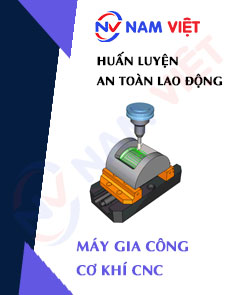
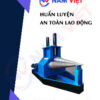
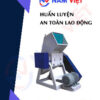



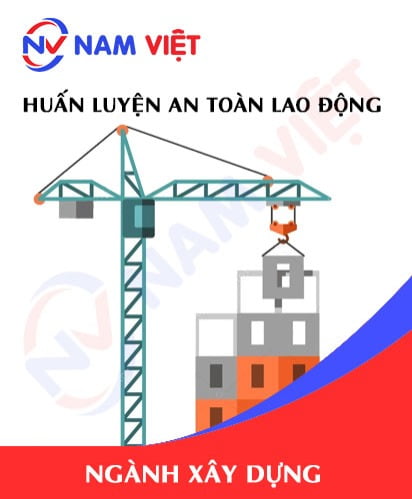

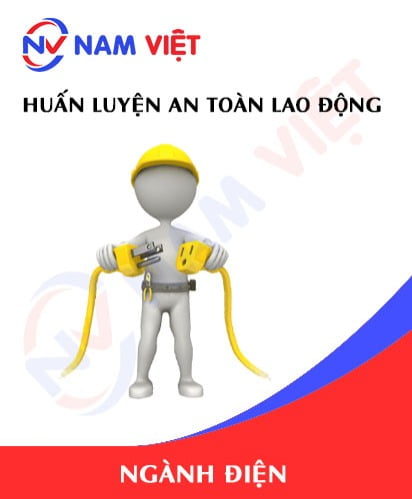





phanminhhang341
Hài lòng với cách tổ chức lớp học